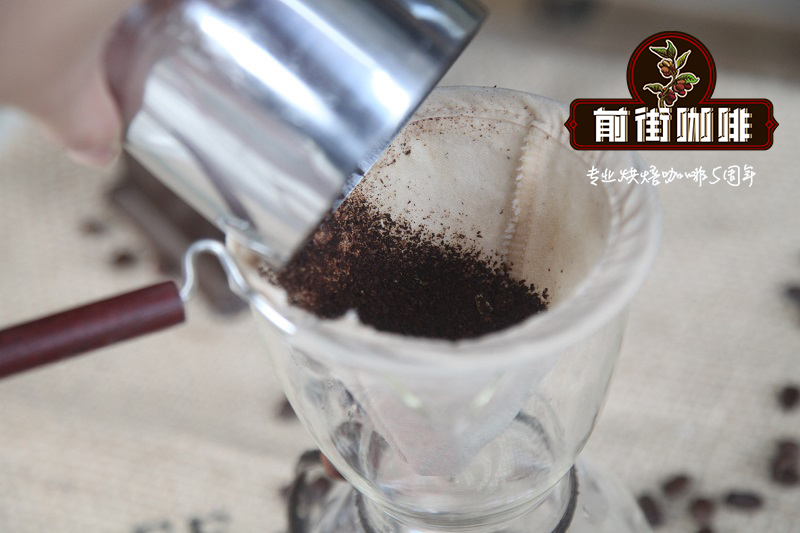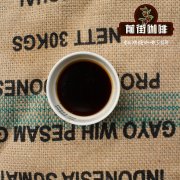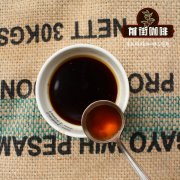Indonesia WIB-1 Robusta coffee how to drink _ Indonesia Java Robusta WIB what does it mean?

Professional coffee knowledge exchange more coffee bean information please follow the coffee workshop (Wechat official account cafe_style)
Indonesia WIB-1 Robusta: bitter, well-matched, mellow thickness. It also smells sour because of the washing type.
Washing method (Washing)
Because of the lack of sufficient sunshine in the Indonesian archipelago, the Dutch introduced the "water washing method", also known as "WIB" (West Indische Bereiding), around 1740, which is different from the traditional sun method, also known as "OIB" (Oost Indische Bereiding). Coffee beans exported from Java are often marked "WIB", which means washed beans. The treatment steps of washing beans are as follows:
Java, which belongs to Indonesia, is the fourth largest island in the country, and the capital Jakarta is located on the northwest coast of Java. In addition, java is the name of a computer language, and because Java is rich in the famous Java coffee, the computer language takes Java as its name and the steaming Java coffee as its icon.
Java is surrounded by the sea, belongs to the tropical rain forest climate, there is no change of cold and summer seasons, the annual average temperature is 25mur27 degrees Celsius, the rainfall is abundant, and the better natural conditions make the island rich in tropical plants and coffee production.
Producing area: Java, Indonesia
Variety: Robusta
Delivery time: October-April
Altitude: 600m / m / 1000m
Grade: WIB-1
Treatment: washing
Cup test: chocolate, cocoa, mellow, earthy aroma, syrup, milk
Baking degree: FULL CITY
one
Selection of beans
Put the harvested fruit in a water tank and soak for about 24 hours. At this time, ripe fruit will sink, while immature and overripe fruit will float up and can be removed.
two
Remove the pulp
Use a machine to remove the peel and pulp, leaving only coffee beans wrapped in endocarp. At this time, there is a layer of mucous membrane on the outside of the beans, and the process of washing is to wash this layer of mucous membrane.
three
Ferment
The adhesion of the mucous membrane is very strong and is not easy to remove. It must be placed in the tank for about 18-36 hours to ferment and decompose the mucous membrane. There are two methods of fermentation, namely wet fermentation and dry fermentation. As the name implies, the former adds water and the latter does not add water. In the process of fermentation, the seed and internal pulp will produce special changes, which is one of the steps that most affect the flavor of coffee. Some farms add hot water or enzymes to speed up fermentation, which has a negative impact on quality and is not popular with selected coffee lovers.
four
Water washing
Farms that use the washing method must build washing ponds and be able to introduce a continuous supply of running water. During the treatment, the fermented beans are put into the pool and passed back and forth, using the friction of the beans and the power of running water to wash the coffee beans until smooth and clean.
five
Drying
After washing, the coffee beans are still wrapped in the pericarp with a moisture content of up to 50%. It must be dried so that the moisture content is reduced to 12%, otherwise it will continue to ferment, mildew and rot. The better treatment is to use sunlight to dry, although it takes 1-3 weeks, but the flavor is excellent and very popular. In addition, machine drying is used in some places, which greatly shortens the processing time and makes the flavor not as good as that of sun-dried coffee.
six
Shelling
The dried beans can be stored in a warehouse or handed over to the factory for shelling to remove endocarp and silver film.
seven
Selection and grading
Like the sun method, washed coffee beans are selected and graded to remove defective beans, ensure better quality, and then give them to exporters to sell around the world.
END
Important Notice :
前街咖啡 FrontStreet Coffee has moved to new addredd:
FrontStreet Coffee Address: 315,Donghua East Road,GuangZhou
Tel:020 38364473
- Prev

Indonesia Sumatra Lindong Star Mantenin Information introduction _ Ironhide Camantning is good?
Professional coffee knowledge exchange more coffee bean information please follow the coffee workshop (Wechat official account cafe_style) listen to the editor to introduce the gentleman in coffee Indonesia Sumatra Lindong Star Manning. Some people say that, in fact, only 50% of each cup of coffee is made of coffee, and the other 50% is a complex thing called feeling. So this other hundred
- Next

Indonesia Sumatra Lindong sweet-scented osmanthus flavor mantenin coffee bean introduction _ sweet-scented osmanthus tiger mantenin delicious
Professional coffee knowledge exchange more coffee bean information Please follow the coffee workshop (Wechat official account cafe_style) many years ago, we heard the legend that there is a sweet-scented osmanthus flavor in Indonesian coffee, but we have never tasted it. Until 2014, Nordic Frog Coffee finally got a coffee from Indonesia-Sulawesi Island with obvious sweet-scented osmanthus fragrance.
Related
- Detailed explanation of Jadeite planting Land in Panamanian Jadeite Manor introduction to the grading system of Jadeite competitive bidding, Red bid, Green bid and Rose Summer
- Story of Coffee planting in Brenka region of Costa Rica Stonehenge Manor anaerobic heavy honey treatment of flavor mouth
- What's on the barrel of Blue Mountain Coffee beans?
- Can American coffee also pull flowers? How to use hot American style to pull out a good-looking pattern?
- Can you make a cold extract with coffee beans? What is the right proportion for cold-extracted coffee formula?
- Indonesian PWN Gold Mandrine Coffee Origin Features Flavor How to Chong? Mandolin coffee is American.
- A brief introduction to the flavor characteristics of Brazilian yellow bourbon coffee beans
- What is the effect of different water quality on the flavor of cold-extracted coffee? What kind of water is best for brewing coffee?
- Why do you think of Rose Summer whenever you mention Panamanian coffee?
- Introduction to the characteristics of authentic blue mountain coffee bean producing areas? What is the CIB Coffee Authority in Jamaica?

